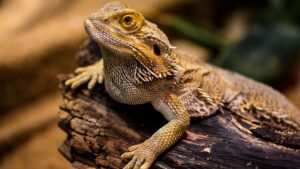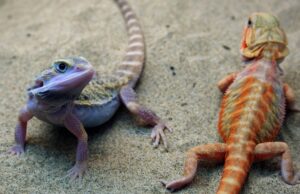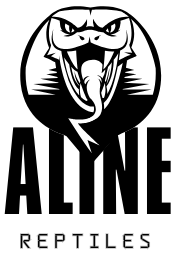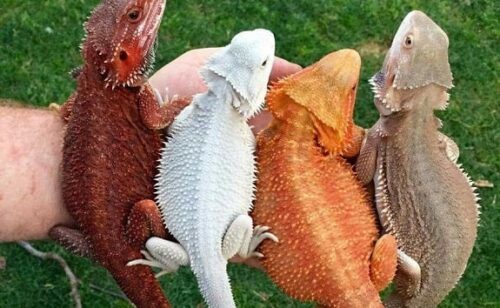Imagine walking into a room, and there, basking under the warm glow of a basking light, is your bearded dragon. Its vibrant colors, whether fiery red, sun-kissed yellow, or cool lavender, immediately grab your attention. The mesmerizing bearded dragon colors aren’t just for show – they are a reflection of its health, environment, and even its mood.
Whether you’re a new bearded dragon owner or a seasoned reptile enthusiast, understanding the colors and color morphs of these fascinating creatures is key to providing them with the best care and appreciating the stunning variety they come in.
But what exactly makes their colors so unique? What do these colors mean? How can you take care of a bearded dragon whose color is as distinct as its personality? In this guide, we’ll take a deep dive into the world of bearded dragon colors, from the most common to the rarest morphs, how their colors change, and the proper care to keep them vibrant and healthy.
What Are the Different Colors of Bearded Dragons?

Bearded dragons are well-known for their incredible range of colors. Their color variations come in a variety of shades and patterns, making each one a unique living artwork. Whether you are a beginner or an expert, understanding the differences in color can help you better understand your pet’s needs and how to take care of it.
Wild-Type Colors
In the wild, bearded dragons are typically shades of brown, tan, and gray. These colors help them blend into their desert environments, providing camouflage from predators. The patterning in wild bearded dragons is often a mix of blotches, stripes, or spots, which vary in intensity depending on the individual dragon. This helps them remain hidden in the arid landscapes of Australia, where they are native.
Common Color Variations
While wild-type colors are common, selective breeding has led to the emergence of several vibrant and exotic color variations. The most common colors you’ll find in pet bearded dragons include:
- Red: One of the most sought-after colors, ranging from a deep crimson to a fiery orange-red.
- Orange: Vibrant and striking, orange bearded dragons can range from light tangerine to dark burnt orange.
- Yellow: Some bearded dragons display a pale, almost pastel yellow, while others have more vibrant gold tones.
- White: Often seen in combination with other colors, a pure white bearded dragon is rare but stunning.
| Color | Description |
|---|---|
| Red | Varies from deep crimson to bright fiery orange-red, often appearing on dragon morphs like the “Red Hypo.” |
| Orange | Bright orange shades, often with hints of yellow. Common in “Citrus” morphs. |
| Yellow | Pale pastel to rich gold, frequently found in the “Sunburst” morph. |
| White | Pure white dragons with minimal color, typically seen in crossbreeding morphs. |
Rare and Unique Color Morphs
If you’re looking for something extra special, rare color morphs of bearded dragons are available. These rare colors are the result of careful breeding, genetics, and sometimes a touch of luck. Some of the rarest and most beautiful color morphs include:
- Blue: Blue is a rare and fascinating color, and bearded dragons with this hue are highly sought after. A true blue bearded dragon is rare, and often, the blue appearance is a result of breeding specific lines of morphs.
- Purple: Just like blue, purple bearded dragons are incredibly rare, often resulting from crossbreeding with other color morphs to create unique shades.
- Pastel: Pastel morphs are light, almost translucent dragons that have a pale, soft color pattern, often combined with other hues to create a stunning effect.
The Science Behind Bearded Dragon Colors
The color variations in bearded dragons are largely driven by genetics. Selective breeding has allowed for an impressive variety of colors to emerge, with certain traits being passed down over generations.
Also, the two main genetic factors that influence the color of a bearded dragon are dominant and recessive genes. By understanding these genetic factors, breeders can produce specific color morphs, such as the vibrant red or orange hues seen in many pet bearded dragons.
Why Do Bearded Dragons Change Color?
One of the fascinating aspects of bearded dragons is their ability to change color. This ability is not just for aesthetic purposes but is actually deeply tied to their health, mood, and environment.
Natural Color Changes
Bearded dragons are known for changing their color depending on various factors, such as their environment or emotional state. For instance, when basking in warm sunlight, a bearded dragon might turn a deeper shade of brown or tan. This is a natural response to absorb more heat, which is essential for their metabolism.
- Stress Colors: When a bearded dragon is stressed, its color may darken significantly. This is usually accompanied by a change in behavior, such as puffing up or becoming lethargic. If your dragon is turning dark or black for extended periods, it could indicate stress, health issues, or environmental concerns.
- Mood Changes: A bearded dragon might also change color depending on its mood. For example, a bright orange or red coloration can indicate that your dragon is feeling more energetic, active, or even territorial. In contrast, a pale or faded color could mean your dragon is ill or feeling unwell.
Environmental Impact on Color
Bearded dragons are highly sensitive to their environment. The intensity of their coloration can change depending on the lighting and temperature around them.
- Lighting: Proper UVB lighting helps bearded dragons maintain their vibrant colors. Without adequate UVB exposure, a bearded dragon’s colors can appear dull or faded, and it can also cause health issues like metabolic bone disease.
- Temperature: The temperature of the environment plays a significant role in their ability to express their colors. Bearded dragons may become darker to absorb more heat in colder environments, while they might appear lighter when they are too hot to help reflect the sunlight.
Rarest Bearded Dragon Colors and How They’re Bred

Some color morphs are considered rare and can fetch a higher price due to their unique appearance. Here are some of the rarest and most sought-after color morphs:
- Blue: As previously mentioned, blue is a rare and highly coveted color. True blue bearded dragons are often a result of mixing certain morphs that carry the “blue gene.” This color is not naturally occurring in the wild but has become more popular in breeding programs.
- Purple: The purple color morph is another rare and stunning trait that can be created by combining multiple genes. Purple bearded dragons often have a mix of light blues, purples, and lavenders, creating a mesmerizing effect.
- Pastel: The pastel bearded dragon morph features soft, light colors, often with a translucent quality. These dragons can appear almost ethereal in their light tones, ranging from pale pinks to soft yellows.
Where to Buy Bearded Dragons with Specific Colors
If you’re interested in purchasing a bearded dragon with a specific color, it’s essential to know where to find reputable breeders and what to look for to ensure you’re buying a healthy pet.
Top Reputable Breeders and Pet Stores
- Reputable Breeders: Look for breeders who specialize in specific morphs and have a proven track record of breeding healthy, vibrant bearded dragons. Ensure they are transparent about their breeding practices and genetic lines.
- Pet Stores: While some pet stores offer bearded dragons, be sure to choose one that has a knowledgeable staff and provides healthy animals. Bearded dragons at pet stores may not always be as well-cared for as those bred by specialists.
How Much Do Colorful Bearded Dragons Cost?
Prices for bearded dragons can vary widely depending on the morph and rarity of their color. For example:
| Morph/Color | Price Range |
|---|---|
| Wild-Type | $50 – $100 |
| Citrus Orange | $100 – $200 |
| Red Hypo | $150 – $300 |
| Blue and Purple | $500 – $1000+ |
Rare color morphs, like blue or purple, are typically more expensive due to their rarity and the genetic work required to produce them.
How to Care for Bearded Dragons with Unique Colors
While the care of bearded dragons is generally the same across all color morphs, there are a few special considerations for those with rare or vibrant colors.
General Care Tips for All Bearded Dragons
- Tank Setup: Provide a large tank (at least 40 gallons) with proper UVB lighting, a basking area, and a cool-down zone.
- Temperature and Lighting: Maintain temperatures of 95-105°F in the basking area and 75-85°F in the cooler side. Ensure that UVB lighting is provided for 10-12 hours a day.
Caring for Special Color Morphs
Some color morphs may require additional care to keep their colors vibrant:
- UVB Exposure: Bearded dragons with bright or rare colors often require more UVB light to maintain their health and color intensity.
- Diet: A balanced diet rich in calcium, vitamins, and nutrients will help enhance the colors of your dragon.
FAQs
- Do all bearded dragons change color? Yes, all bearded dragons can change color based on temperature, mood, and health.
- Are blue bearded dragons real? Yes, blue bearded dragons are rare and bred from specific morphs.
- Can diet affect a bearded dragon’s color? Yes, a well-balanced diet with plenty of nutrients helps enhance the color vibrancy.
- Why is my bearded dragon turning dark? A bearded dragon may darken when it is stressed, cold, or unwell.
Conclusion
Bearded dragons come in a beautiful range of colors, from the natural browns of their wild-type ancestors to the fiery reds, oranges, and rare blue and purple hues of modern morphs. Understanding bearded dragon colors variations and what they mean is essential for providing the best care for your pet.
Whether you’re choosing a dragon based on its color or are simply fascinated by their unique patterns, knowing how to properly care for these reptiles will help you enjoy the many vibrant shades your dragon has to offer.

